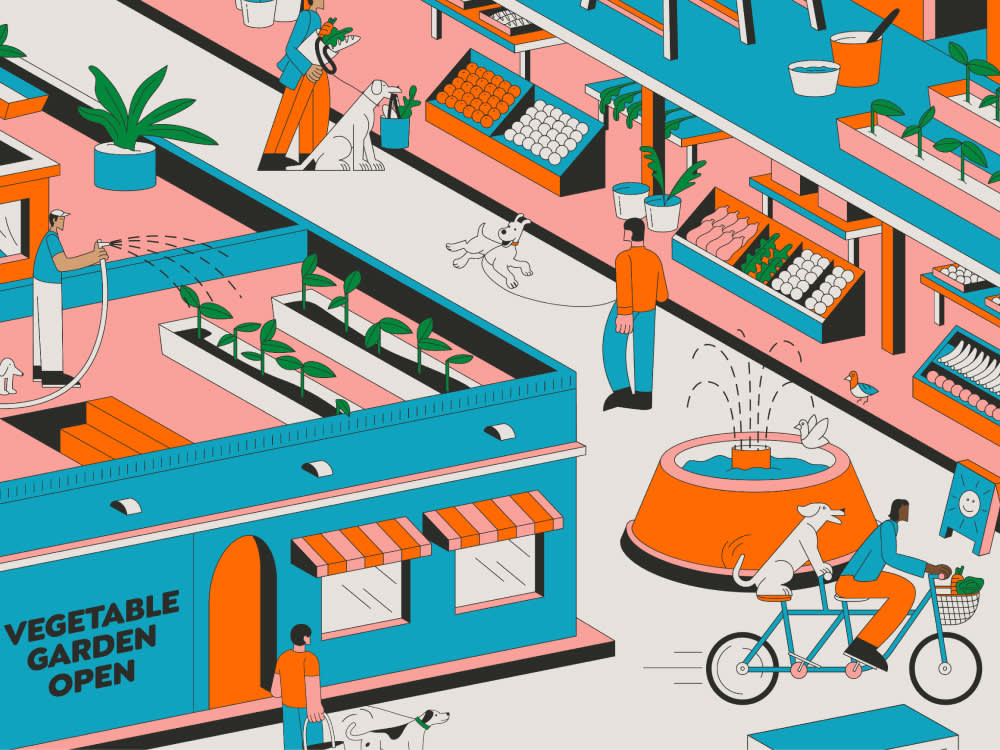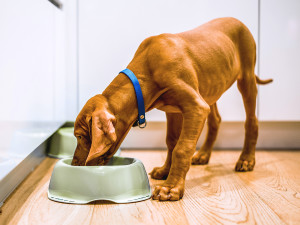The Sustainable Pet Food Movement is Fired Up
From cricket kibble to miso mice, leading brands are exploring how sustainable pet food products can reduce carbon paw prints.
Whether it’s cricket cookiesopens in new tab or Harmless Hunt miceopens in new tab, you’ve probably noticed a growing number of new, sustainable pet food options popping up on your radar. While there are already myriad considerations in choosing a food for your pet, sustainable options can be beneficial to not only the long-term health of your pet, but also their environmental paw print.
An Intro to the Sustainable Pet Food Movement
First off, the reduction of meat-based ingredients in your pet’s diet is not just about personal preferences. Increasingly, we’re seeing data showing how our overall reliance on meat is having a negative impact on the planet. And for pet parents who are increasingly making adjustments to their own diet, taking further steps to cut down on meat-derived ingredients is a no-brainer.
If you take into account packaging, transport, and how your food is prepared and processed, then it provides a comprehensive picture of how your pet’s diet is contributing to your household’s overall environmental footprint. A 2017 UCLA studyopens in new tab found an average commercial pet diet makes up about a quarter of the total environmental impact of domestic meat consumption. Increasingly, more and more pet owners are asking these questions about climate change and how their consumer choices can impact our planet’s trajectory.
Demand For Sustainable Alternatives Is Growing
Petalumaopens in new tab, a sustainable dog food brand, is one of the recent entrants looking to address this growing consumer demand — a demand they say spans a range of pet owner age groups and previous pet diets.
How much do you spend on your pet per year?
“There is growing consumer awareness about the problems with eating meat as it relates to the environment, putting aside animal ethics for a moment,” says Petaluma co-founder Caroline Buck. “There’s definitely a group of people who have already made dietary changes themselves, and they’re looking for other ways to cut back on their own animal product consumption. They are taking steps themselves, but they may not realize that their pets most likely consume a huge percentage of meat in their household, and that they can also thrive on a plant-based diet.”
After two years of research and development, Petaluma launched its first product over the summer to address the environmental problem of climate change as well as to provide a healthier, more sustainable food alternative for animals. Petaluma bakes its pet food in an oven in small batches in Wisconsin. ��“It’s baked, which is different from most dog foods that are pressure-cooked and extruded. It’s available exclusively on our website,” Buck says. “And we’re working on some additional formulas and food products to come out later this year.”
Research is Supporting the Sustainability Story
The research looking into environmental impact and long-term health is new. A studyopens in new tab commissioned by Petaluma estimates that, on average, their product requires 89% less land use, generates 75% fewer greenhouse gas emissions, and requires 54% less freshwater compared to an average dog brand diet. The $42-billion pet food market continues to grow, providing more options for pet parents. Recent data also shows greater demand and spending on “a healthier lifestyle” and supplements among pet care trends, according to The American Pet Products Associationopens in new tab.
While it’s still early days for companies like Petaluma, their early data suggests that the potential customer base for sustainable pet food products is much bigger and broader than they initially anticipated. “We thought we would get initial customers who were switching over from other plant-based formulas or other formulas that are trying to tell the sustainability story,” says Buck. “When in fact it’s been a much more mixed bag of customers — we’re getting a lot of people who are feeding premium pet food diets who are curious about Petaluma, which is encouraging.”
The definition of sustainable pet food may vary from company to company, with some focusing more on packaging. The Farmer’s Dogopens in new tab, for example, highlights the environmental footprint of its packaging. “You can recycle the cardboard box the food is delivered in and our insulation is biodegradable,” the company says. “You can compost it, or even just put it in the sink, run some water over it, and it will dissolve right down the drain.”
Industry Leaders Are Following Suit
But as a greater number of pet owners are becoming environmentally conscious, there are companies like Because Animalsopens in new tab working to develop an entirely new category of pet foodopens in new tab — cultured, lab-grown meat — in order to eliminate animals completely from their production cycle. (Reliance on insects and alternative proteins is not just for pets, but rather, is a part of a broader trend: Research showsopens in new tab more and more countries will have to come up with new options to feed growing populations and as effects of climate change become more acute.) Because Animals says will be better for pets because it “will include nutrients commonly missing from most commercial foods, and will be made from the protein source your pet evolved eating — such as mice for cats, and rabbit for dogs.”
Some of the biggest pet food brands in the world, including Mars Petcareopens in new tab and Nestléopens in new tab Purina Petcare, have also launched vegetarian or insect-based product lines for cats and dogs. Mars launched insect-derived pet food brand Lovebugopens in new tab earlier this year, highlighting on its website that farming bugs consumes 80% less land than beef. Though currently only available in the U.K., Lovebug’s formula is derived from black soldier fly larvae (yum!) in addition to maize, dried beet pulp, and other minerals and oils. The sustainable cat food also comes in recyclable, plastic-free packaging.
Another Mars brand, Karmaopens in new tab, is zero-waste, non-GMO, and “plant-first” with 60% plant proteins and superfoods, supplemented with fish and chicken. The brand also diverts 100% of their waste from a landfill to an alternate disposal source. Sustainable doesn’t mean vegan or vegetarian, necessarily. Not all brands eliminate meat products from their formulas, so there are still plenty of options for pet owners who believe animals are inherently carnivores.
“Pets can be an important part of a more sustainable world,” said Ikdeep Singh, President of Mars Petcare North America. Mars Petcare’s sustainability initiativesopens in new tab also include established brands, like Royal Canin’s partnership with TerraCycleopens in new tab, which gives pet parents the opportunity to return their clean and empty dry-food bags and wet-food pouches to participating vet clinics and specialty retailers to be recycled into everything from dog park benches to agility equipment.
Similarly, two other industry leaders, Hill’s Pet Nutrition and Bond Pet Foods, Inc recently announced a partnershipopens in new tab focused on developing more alternatives to Hill’s popular meat proteins. Bond, a company designed to reimagine creating pet food meat through more sustainable, responsible, and humane practices, aims to apply that expertise to Hill’s products. And in response to the growing number of pet food manufacturers caring about their carbon footprint, large packaging giants like Mondi have even come up with new, more sustainable packaging solutionsopens in new tab to replace aluminium.
Things to Consider When Purchasing New Pet Food
When choosing the right diet for your pet, you should consider the potential additional cost of premium sustainable brands. Ultimately, the goal behind a lot of alternative, sustainable pet diets is diversification of source ingredients and long-term well-being of your pet — as well as our planet — even if the research behind these new options is still relatively new.
“For anyone evaluating any dog food, they should verify that it’s a balanced product from a nutritional perspective [meets guidelines] and isn’t missing any critical food groups,” says Buck. While the FDA and Association of American Feed Control Officials (AAFCO)opens in new tab are still in the process of updating their guidelines to include these novel ingredients, it’s up to pet parents to do our own research and consult with our vets to ensure that our pets are getting the right nutrients — one way or another.




